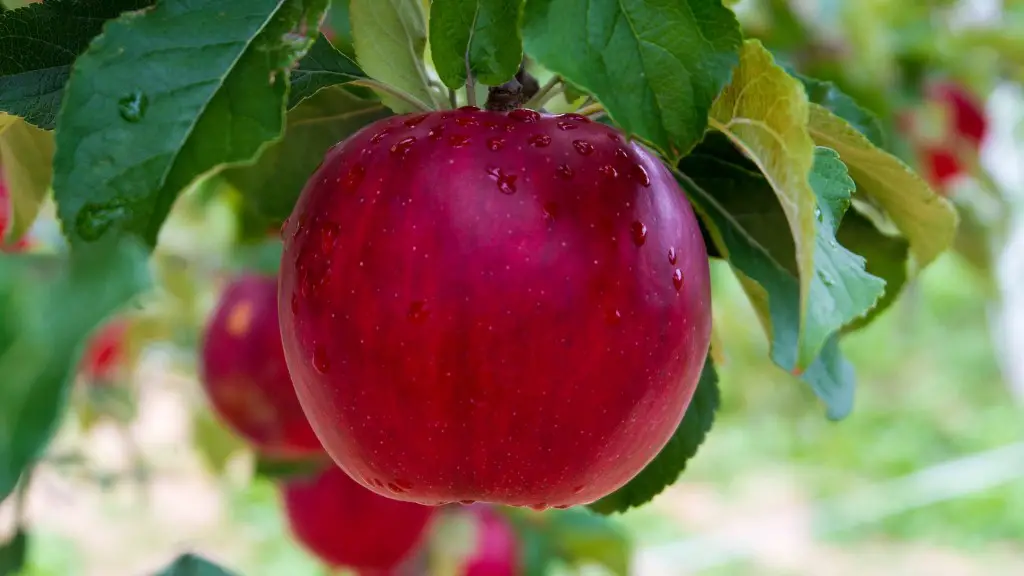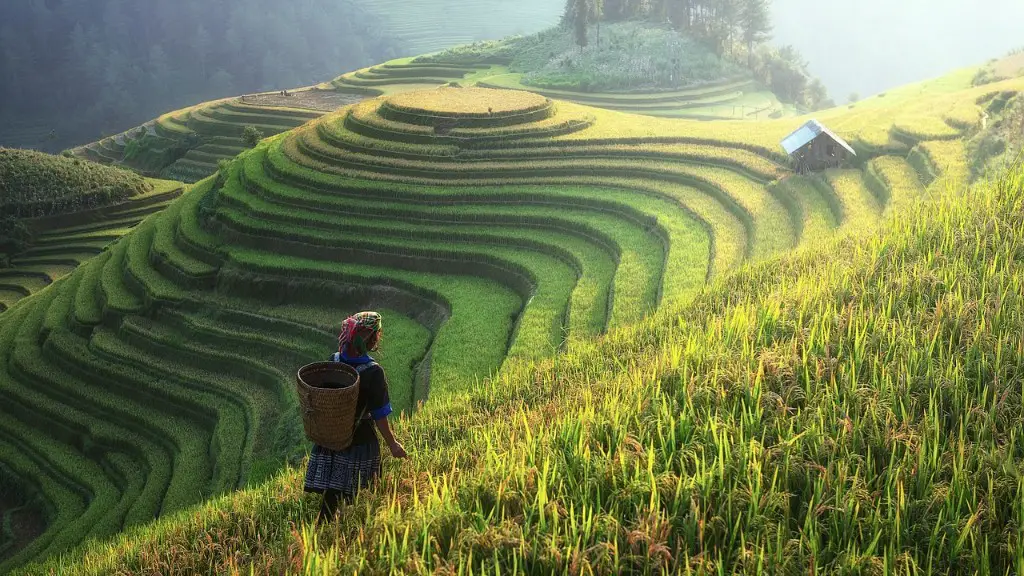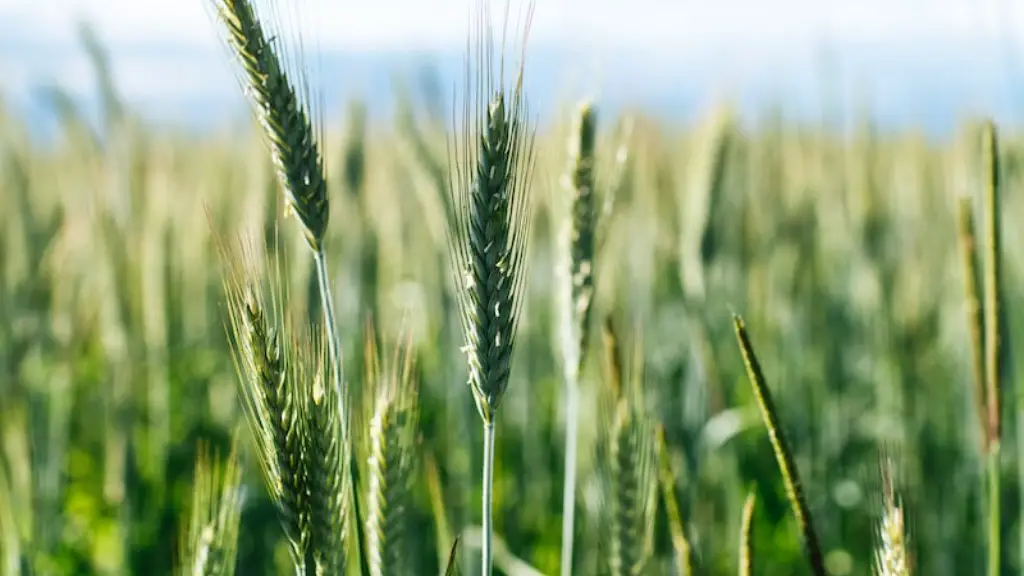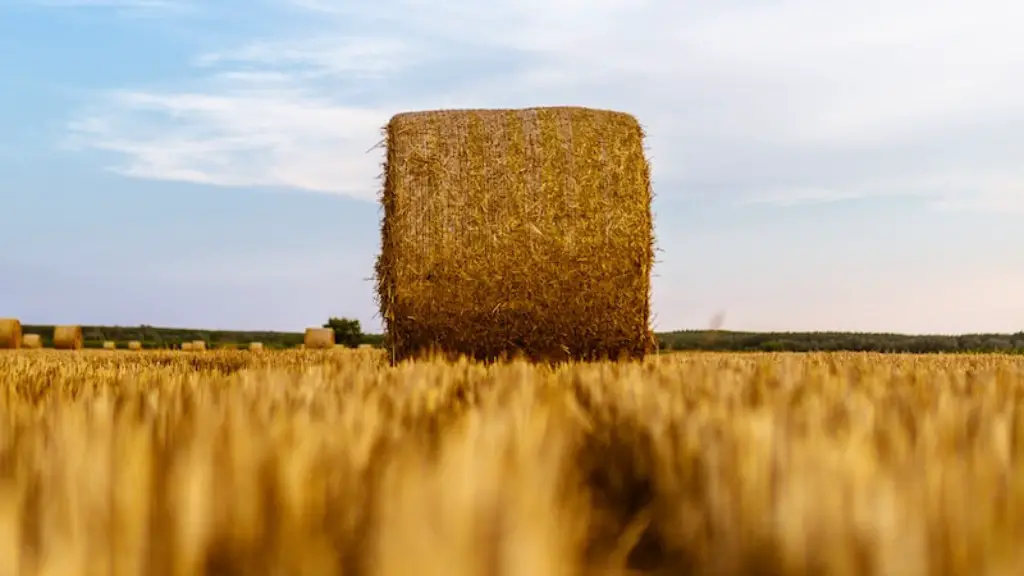Peasant farming is an agricultural system used primarily by small-scale farmers, most often in the developing world. It is characterized by the reliance on family labor, the presence of draft animals and hand tools, and minimal use of capital investments or external inputs. It is a system which has persisted for centuries in many parts of the world. The term ‘peasant farming’ is sometimes used to refer to peasant-like subsistence agriculture, but it can also be used to refer to farms that are market-oriented or that enable people to make a living from agriculture.
The traditional peasant farming system is characterized by an emphasis on labor-intensive cultivation of local and regional crops. Crops are mostly planted and managed manually, and often intercropped with trees and other plants. Traditional peasant farming also involves a significant component of animal husbandry, either integrated within the farming system or as standalone operations. Livestock provides manure, which can be used to increase soil fertility, as well as another source of income.
Peasant farmers are usually engaged in mixed crops and livestock production, with a focus on sustainability and self-sufficiency. They also practice minimal use of synthetic fertilizers and pesticides; instead, farmers rely mainly on organic matter, such as compost, green manures, and crop rotation, to maintain soil fertility and manage pests. This allows the farmers to produce food while at the same time guarding the environment.
One of the key advantages of the peasant farming system is its resilience to climate change. Small-scale farmers rely on local knowledge and traditional management practices, which put them in a better position to cope with the impacts of climate change. For example, by adopting crop diversity and rotational grazing systems, peasant farmers can better manage pests and improve soil fertility, therefore mitigating the effects of drought and fluctuations in temperatures.
Despite its advantages, the peasant farming system faces challenges due to increasing population pressure, land fragmentation, and an aging farmer population. Moreover, there is a lack of access to credit and other forms of capital which limits the ability of these farmers to invest in the technology, equipment, and inputs needed to modernize their operations. Without access to capital, peasant farmers cannot take advantage of new and improved varieties of crops and create market opportunities, which would allow them to increase their production and incomes.
Globalization and Peasant Farming
The rise of globalization has had a significant impact on peasant farming. With the emergence of a global market, peasants are now facing stiff competition from large-scale operators and corporate agribusinesses who are better equipped to take advantage of global markets. As a result, several small farmers have been displaced due to the increasing commercialization of agriculture and use of large-scale and mechanized equipment, which is more efficient than traditional and labor-intensive methods used by peasants.
The forced displacement and migration of peasant farmers have had an adverse effect on the environment. Intensive agriculture and grazing operations have had a harsh impact on land and soil degradation, loss of biodiversity, and climate change. In addition, peasant farmers often have limited access to technology and inputs, making them unable to improve their operations and increase their productivity.
Furthermore, the increased commercialization of the food system has put important pressure on peasant farmers. This is due to the commodification of food, which threatens the sustainability and resilience of the peasant farming system. The privatization of land and the power of agribusinesses to control the food system has led to a deprivation of peasants’ access to land and resources, exacerbating global food insecurity.
Government Policies and Peasant Farming
Because of the challenges faced by peasant farmers, governments have developed various policies to promote the sustainability and resilience of the peasant farming system. These policies encourage investment in rural business development and small-scale rural industries to help create employment and income opportunities. In addition, the government provides funding to expand the use of improved technologies and inputs, and to improve the infrastructure needed to transport agricultural products to markets.
Governments also provide subsidies and access to credit to enable peasant farmers to undertake productive activities. They also develop and implement policies aimed at securing access to land, water resources, and other inputs needed for sustainable agriculture. In addition, the governments of some countries have provided training and capacity-building initiatives to help small-scale farmers adopt sustainable agricultural practices.
Government policies are also aimed at promoting farmer organizations. These farmer organizations provide financial services, marketing help, inputs, and technical assistance to peasant farmers. They also help protect the rights of farmers and advocate on their behalf to influence government policy.
E-Commerce and Peasant Farming
Many modern technological changes such as the internet, e-commerce, and mobile phones are being used to help peasant farmers increase their access to markets and expand their potential customer base. Through e-commerce platforms, they can now reach customers far beyond their local area and sell their products at competitive prices. This also helps them to earn higher income and build their social and economic reputation. In addition, mobile phones enable them to get updates on market prices, weather conditions, and government policies related to agricultural production.
Furthermore, digital technologies enable peasant farmers to access better and more efficient farming practices. They can now use satellite and GIS data to monitor the water levels of their farms and predict weather conditions. They can also access information related to mechanization, pest management, and efficient production techniques. This helps them to maximize yields and create market opportunities for their products.
In addition, digital and mobile technologies have allowed peasants to better connect with other farmers and agricultural experts. This enables them to get advice on crop production and marketing, access finance and credit, and join virtual networks which can help them to increase their knowledge and skills related to agricultural production.
Environmental and Social Impacts of Peasant Farming
Another benefit of peasant farming is its positive environmental and social impacts. Peasant farming systems promote conservation of resources, soil fertility, and biodiversity. For example, through the use of integrated farming systems and non-destructive grazing practices, peasants can minimize water consumption and improve soil fertility. In addition, the diverse crops grown by peasants help to increase genetic diversity, creating a more resistant food system.
Moreover, peasant farming systems also help preserve local cultures and traditional knowledge. They rely on generations of collective knowledge, know-how, and practices which have been developed over hundreds of years. These traditional farming practices help to maintain the longevity of ecosystems, protect natural resources, and ensure food security.
Finally, peasant farming contributes to the rural economy by providing employment, income, and food security for peasant families. This helps to reduce poverty and inequality, as more money circulates within the rural economy and communities are better connected to local and global markets.




